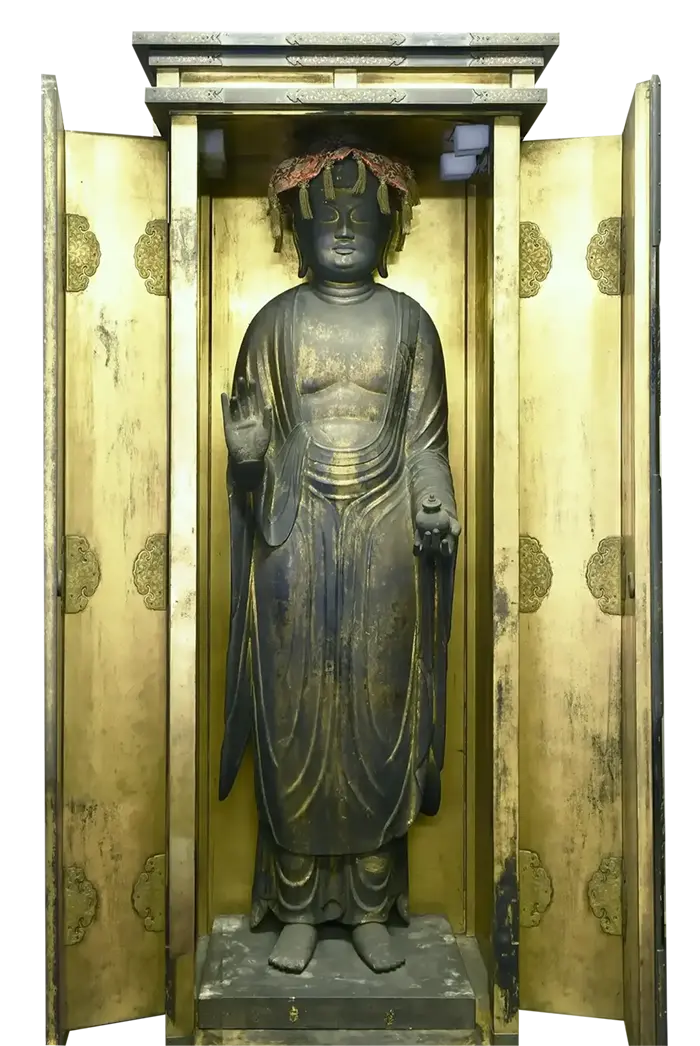
Fukujyusan Inabado Byodo-ji Temple located at Karasuma Takatsuji, which is in the middle of Central Kyoto and near the Karasuma Matsubara stop of the city bus running from Kyoto Station, is a temple with a history of over 1,000 years.
Its origin is said to be a hall built here in 1003 by Tachibana no Yukihira, the governor of the Inaba Province (present-day Tottori Prefecture), after receiving a revelation from Yakushi Nyorai (Bhaisajyaguru).
Yakushi Nyorai, to whom the temple is dedicated, is worshiped as a Buddha who cures illness and brings health. It is especially well known as a cancer-fighting Buddha and visited by many people from across the nation who wish for recovery from illness.
The graceful Heian-era Yakushi Nyorai statue, which has been designated as an important cultural property, still attracts many visitors.
Inabado has a serene atmosphere although it is situated in downtown Kyoto.
Experience the historic belief in Yakushi, and refresh both your mind and body.
Address
728 Inabado-cho, Shimogyo-ku, Kyoto 600-8415
Access
5 min. walk to the north from subway Gojo Station
5 min. walk to the south from Hankyu Karasuma Station

1. Omamori/ofuda
Omamori for cancer-fighting, bad luck prevention and illness prevention (six cats), as well as those with dog and bird motifs, are available. There are also goshuincho (temple stamp books) featuring cats, dogs and birds that are used as omamori motifs.

2. Principal image - standing statue of Yakushi Nyorai
The statue is renowned as Inaba Yakushi. The legends of Inabado say that the statue was recovered from the sea of Inaba Province (present-day Tottori Prefecture) by Tachibana no Yukihira who followed a prophetic dream and, after Yukihira’s return to Kyoto, it came flying to his residence at Karasuma Takatsuji. It is thought to have been made in the early 11th century, from a single block of hardwood.

3. Sitting statue of Tachibana no Yukihira
The statue of Tachibana no Yukihira, who was a real-life Heian nobleman, is thought to have been made in the 17th or 18th century. It is made from joint blocks of wood and fully painted. The head part inserted into the body part has inlaid crystal eyes.